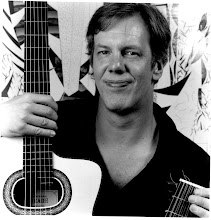 Talmadge Farlow was born in
Talmadge Farlow was born in Apart from these few chords, Farlow received no formal musical training. He did not begin to play the guitar seriously until he was twenty-one, when he first heard Art Tatum on the radio. Tatum’s jazz music fascinated Farlow, who grew up hearing and playing the country or hillbilly music favored locally. His exposure to the music of Benny Goodman and especially Charlie Christian and the electric guitar he played galvanized Farlow’s childhood hobbies into focus. Farlow was fascinated with the possibility of playing sophisticated harmonies and melodic horn lines and with the sound of the new electric guitar. He collected every Christian record and learned every solo from them, note for note. The radio also gave him access to the music of saxophonist Lester Young. Young was influential in the evolution of
Farlow had been trained to paint signs, and so he became the early part of his professional life, painting signs during the day and playing with various dance bands in the
Many of the musicians who passed through the Air Corps basic training facility in
Farlow returned to
Norvo had been absolutely critical in Farlow’s musical development. Every mindful to draw the best results from the trio by creating the greatest variety of context and interest from the songs, he pushed Farlow to greater exploration but also to greater speeds in his linear playing. Like so many of the musicians who grew up under the influence of Charlie Christian, Farlow had favored a more relaxed approach to attack and speed. He struggled first with the new demands but rose to the challenge, in the process developing new plucking techniques that included using the upstroke as well as the down stroke. When Barney Kessel heard Farlow’s speed, he recalls that it forced him, and nearly every other guitarist, to rethink his right-hand technique. Farlow recorded 21 tracks with Norvo and several more with Shaw, but it was the recordings with his own band that established Farlow on the national scene. These recordings, for Blue Note and Verve, made between 1954 and 1959, which also represent the treasure trove of his legacy.
In 1958, Farlow retired to Sea Bright,Farlow was known as much for his reluctance to perform as for his superlative abilities on the guitar. He is closest stylistically to the quintessential bop guitarist, a tall order on an instrument not well-suited to play horn-like lines at horn tempi. His technique was unorthodox as were the unusual voicing and inventive structures of his solos, which invariably utilized the full range of the instrument, and his chromatic chords. The sum of his music style bespeaks the sum of his experiences and the size of his hands, beginning with the “thumb-over” left hand technique that stayed as a vestige of his early days playing the mandolin, to the full use of range that reflected the necessity to learn to play bass lines in the early dance band days.
Farlow died at

No comments:
Post a Comment